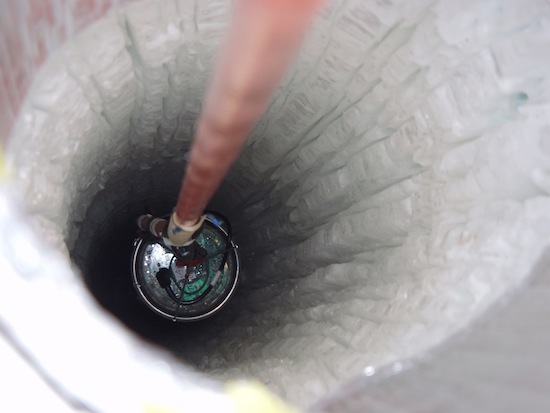
 Credit: IceCube Collaboration/National Science Foundation
Credit: IceCube Collaboration/National Science Foundation
High Energy Ghost Particles from Outer Space
Neutrinos are subatomic particles first postulated by Wolfgang Pauli and Enrico Fermi in the 1930's and first detected in 1956. Neutrinos are sometimes called "ghost particles" because they travel at the speed of light but rarely interact with normal matter. Billions of neutrinos, generated by the thermonuclear processes in the sun or other local high energy processes, pass through earth every second, but leave hardly a trace. Detection of even small numbers of neutrinos has had great cosmic significance, from casting fundamental doubt on the way the Sun shines to helping to support theories about the deaths of massive stars. But neutrino detection requires enormous amounts of target material to catch even a few neutrinos. The IceCube neutrino detector in Antarctica uses 5000 detectors suspended throughout a cubic kilometer of Antarctic ice looking for those rare interactions between outer-space neutrinos and ice molecules. IceCube has recently reported the detection of 28 extremely high energy neutrinos, two of which have energies exceeding a thousand times the highest neutrino energy ever achieved on earth. It is as yet a mystery as to what could have generated neutrinos at these astonishing energies.
Published: May 20, 2013
<
HEA Dictionary ● Archive
● Search HEAPOW
● Other Languages
● HEAPOW on Facebook
● Download all Images
● Education ● HEAD
>

Each week the HEASARC
brings you new, exciting and beautiful images from X-ray and Gamma ray
astronomy. Check back each week and be sure to check out the HEAPOW archive!
Page Author: Dr. Michael F. Corcoran
Last modified Tuesday, 27-Feb-2024 10:15:19 EST


